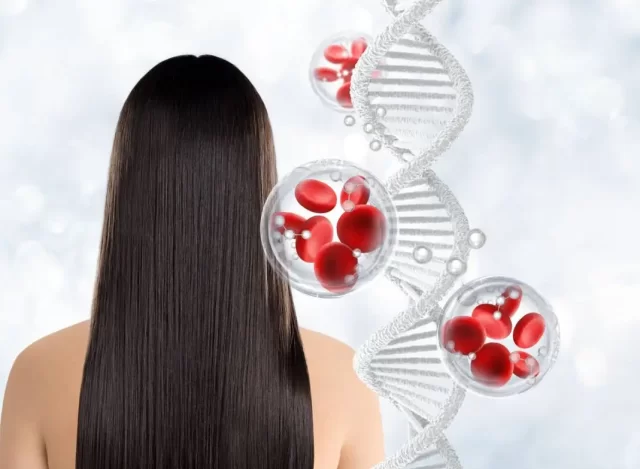The journey to a full and healthy mane on the scalp often begins with understanding the hair growth cycle and how it works. On average, losing 100-150 hair strands daily is a normal affair, with hair follicles undergoing several stages called anagen (growth phase), catagen (transition phase), telogen (resting phase), and exogen (shedding phase). Each of these phases has a timeframe that can be influenced by physiological aspects like aging, nutrition, and the overall health of the body.
A thriving hair cycle ensures that the renewal process within the dermal layers in the scalp remains smooth and uninterrupted, but anything that changes will inadvertently affect hair health. While some shedding is expected, excessive hair loss can be attributed to various factors. Genetics, hormonal imbalances, and lifestyle habits like the use of harsh hair products, chronic stress, or tightly worn hairstyles can contribute significantly to abnormal hair loss. Even illnesses like Covid-19 or events like childbirth are recognized as potential causes for this.
Retaining a healthy hair growth cycle requires an intricate and careful balance of chemical messaging within the body, and a corrective measure that can be taken when that balance is disturbed lies in regenerative medicine. This type of solution looks to channel the body’s innate ability to heal itself beyond just replacing damaged tissue and parts by using stem cell-based treatments. Skin regeneration and self-healing properties are already triggered within the body by cells whose purpose is to detect and repair injuries and eliminate harmful substances through detoxification mechanisms. The exosomes, growth factors, and proteins derived from stem cells, therefore, play an important role in stimulating the renewal and revitalization process within the dermis layers, contributing directly towards the health of the scalp.
Most reasons for hair loss can be linked back to the impact of chronic inflammation, which results in the shrinking of hair follicles, thus thinning out the hair. This deviation in the immune system is key to identifying the solution behind the hair loss condition. High stress levels are linked to several major hair loss conditions: Telogen Effluvium, Alopecia Areata, and Androgenetic Alopecia.
Telogen Effluvium is related to Covid-19 and comes about as a stressful event that triggers the internal body’s workings to shift a greater amount of growing anagen hairs into the resting telogen state. It consists of rapid shedding over a short period, and this direct disruption and damage to the hair follicles would often result in clumps of hair falling out after brushing or washing it. In comparison, Androgenetic Alopecia is a more gradual occurrence of hair loss, though it is also the most common form of hair loss, and can be brought on by genes, hormonal changes, and menopause in women. In contrast to the diffused thinning from Alopecia Areata, which manifests as patches around the scalp, it is identifiable by hair thinning on top of the head and along the sides. The immune system attacking healthy hair follicles causes autoimmune conditions like alopecia areata rather than genetic or hormonal factors.
Exosomes are the nano-sized extracellular vesicles found in all mammalian cells that contain proteins, growth factors, and genetic information like RNA, micro RNA, and DNA. They act as messengers, facilitating communication between cells and promoting healing mechanisms, and additionally, can modulate the immune system to stimulate or suppress the immune response. Growth factors, on the other hand, are organic proteins that various cells like fibroblasts, keratinocytes, and melanocytes produce and secrete. These cells in turn produce collagen, keratin, and melanin. The growth factors play a crucial role in stimulating growth, healing, and regeneration in living tissues, and like their sources, contribute to boosting collagen synthesis, enhancing skin firmness and elasticity, and repairing and rejuvenating the skin.
The quality of hair depends on the quality of the scalp, emphasizing the need for effective treatments that target the scalp. According to a study that compared caffeine absorption through both layers, hair follicles are known to absorb topically applied solutions more effectively than the epidermis’ outermost layer. The caffeine was absorbed nearly 10 times more through the hair follicles, showing its favorability for hair treatments.
In exosome therapy, exosomes and growth factors, typically injected into the target area, are believed to stop further hair loss and promote hair regrowth. Studies have suggested a quantity of over 200 billion exosomes for optimal regeneration within the dermis layers. While claims of visible effects within two to three months exist, assessing results after 6-9 months allows the full scope of the outcomes to be understood.
As a skin and hair care brand, CALECIM® utilizes exosomes and stem cell technology to empower skin and hair follicle cells to be the best versions of themselves by facilitating intercellular communication that boosts and supports repair and rejuvenation functions. Their Advanced Hair System works to stimulate the scalp to grow new hairs, with the serum containing active exosomes, growth factors, and proteins to improve hair quality and thickness. PTT-6®, the patented ingredient at the heart of their solutions and products, is a powerful concentrate that triggers cells in skin and hair follicles to be at their most youthful through a complex mix of exosomes and growth factors. In-vitro tests have revealed a 16% increase in each hair shaft of users after a 12-week treatment of the Advanced Hair System, using it as a female hair loss treatment.
Hair health and hair care are currently undergoing a transformative era with the integration of exosomes, growth factors, and proteins as hair loss solutions. Innovative approaches from brands like CALECIM® include sourcing and formulating these components to maximize their benefits. The ultimate goals of this would be to encourage regeneration and replacement of the old and damaged tissues, boost the renewal process of hair follicle cells, and shorten the duration of the hair growth cycle to allow for faster and fuller hair growth, thus optimizing hair health.

Speaks from heart, always too passionate and driven by emotions. Spins the words with kindness & sharpness, intriguing your ever-inscrutable minds.




